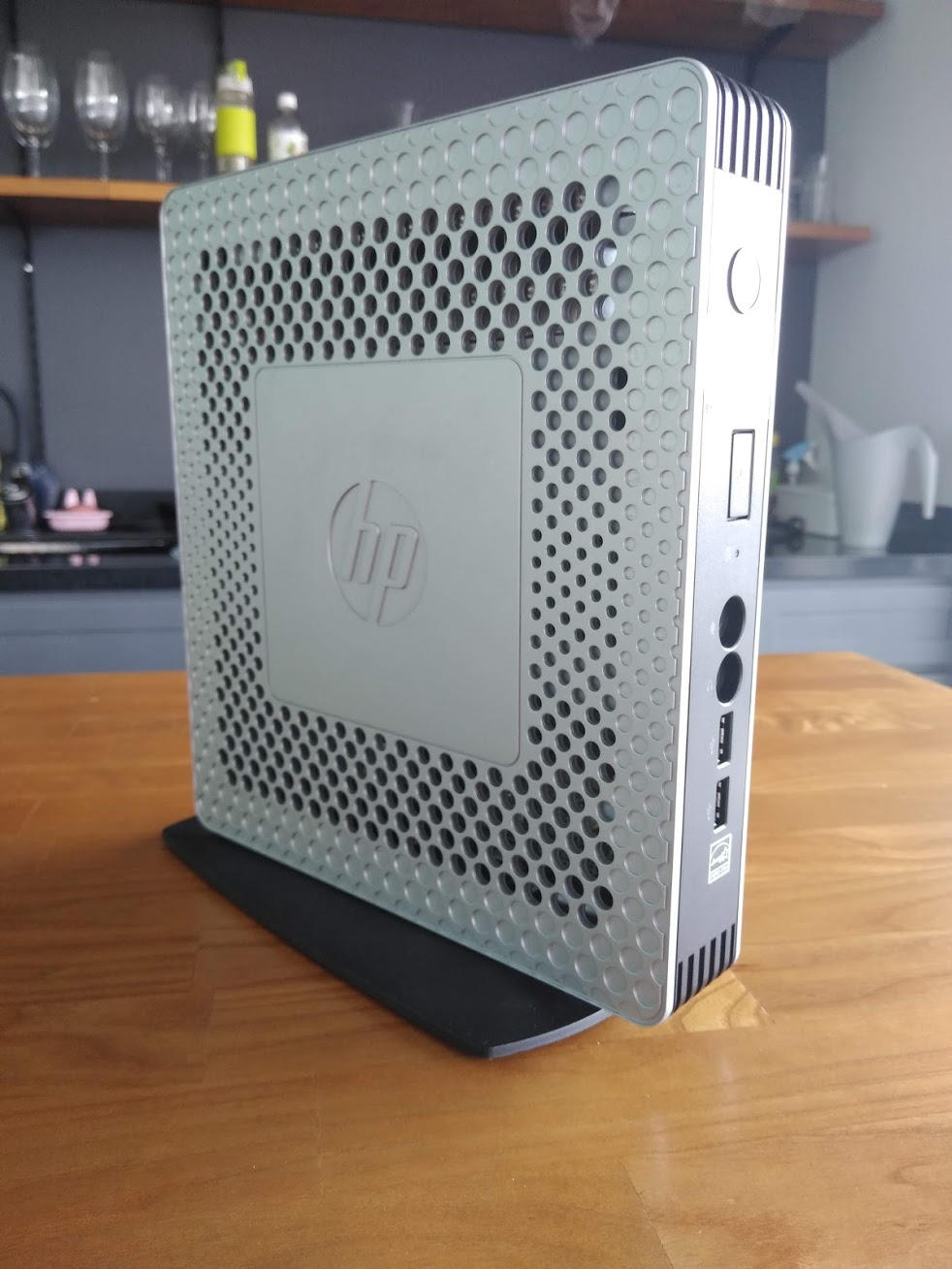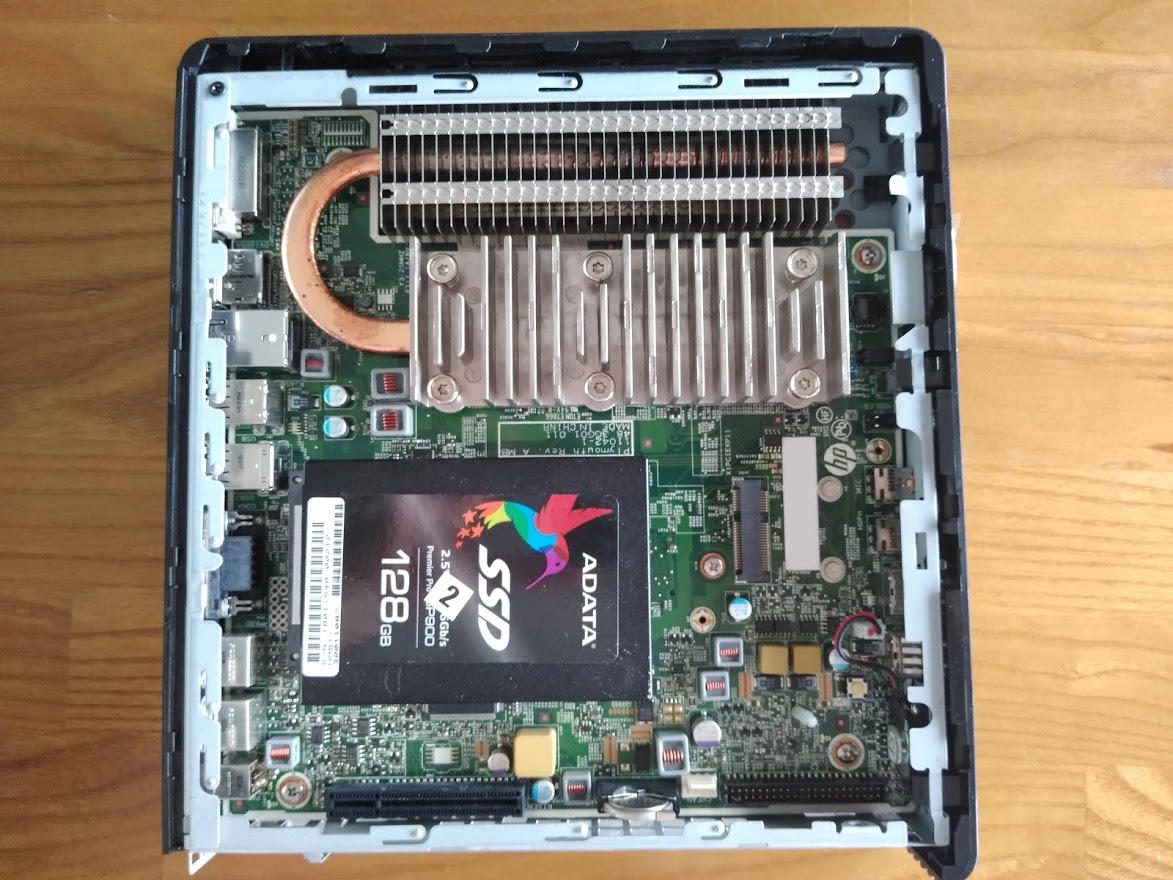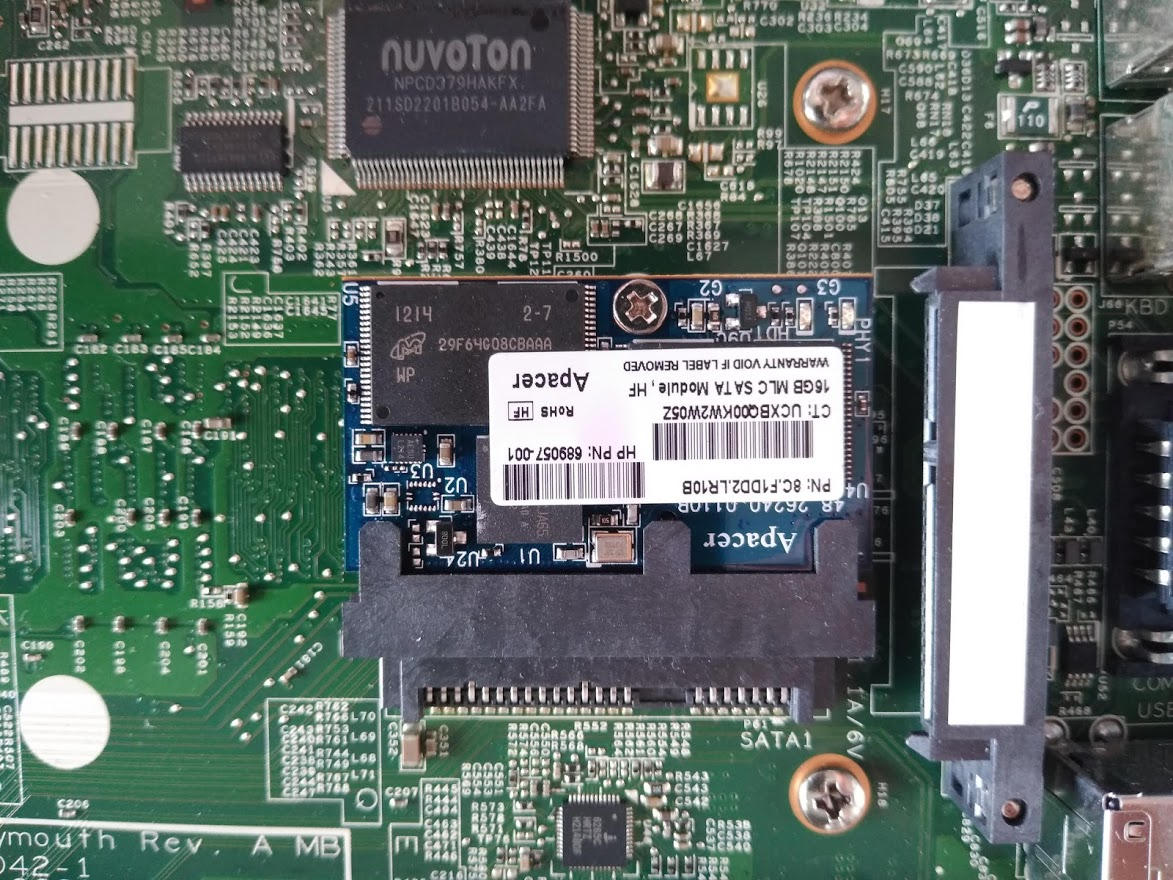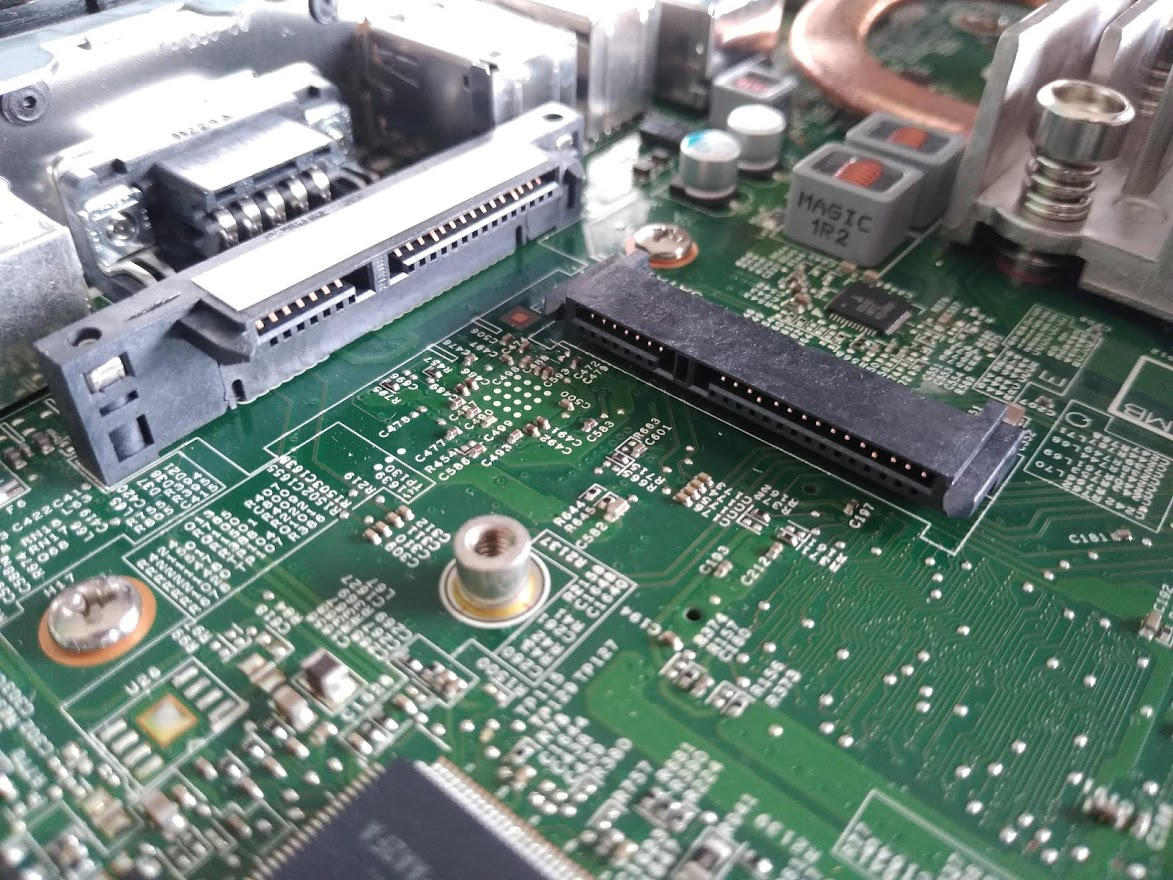I was recently trying to wrap my head around the need for a small cluster of inexpensive machines that I would use as a development platform to test new architectural changes in my company's system... not to mention have little fun and hopefully hone my skills.
I have always been a fan of single board computers such as the Raspeberry Pi: in fact I do own two RPi B+ (single cor, 512 MB of RAM) and an Odroid N2. So I was thinking of using either the Odroid C4 or the Raspberry Pi 4 as the basis for my cluster, in part inspired by the myriad of similar systems that can be found on the net (including the Pi Dramble by Jeff Geerling).
Unfortunately SBCs, though not extremely expensive on their own, require extra money be spent on other necessities: power supply, solid state memory and possibly a case (the C4 has an integrated heat sink, but the RPi4 needs some form external cooling to avoid thermal throttling) so the bills quickly add up.
| Component | Odroid C4 (4GB) | RPi 4 (4GB) |
|---|---|---|
| Board | 60000 | ~70000 |
| Power supply | 6400 | ~10000 |
| Storage (16GB) | 17100 (eMMC) | 16100 (MicroSD) |
| Heat sink | Included | 9700 |
| Total | 83500 | 105800 |
Anyway, while considering SBCs for the cluster, I also stumbled upon some used small form factor PCs on the local equivalent for eBay. Unfortunately they were all too expensive, usually over 250000 KRW. That is until I saw the HP T610: a dual core AMD APU with 4GB of RAM, the original 16GB solid state drive and an additional 120ish GB SSD for around 120000 KRW... still a little too high for my taste but going in the right direction.
So, after a few more days of looking around and gathering information (ParkyTowers has proven absolutely invluable) I stumbled upon another used hardware website that had a listing for four T610 at 90000 KRW each. Thus, I immediately contacted the seller and verified that he also had a T610 Plus and that he was willing to drop the price to 70000 KRW a piece if I bought the whole bundle.
So I ended up with four T610 and one T610 Plus for the grand total of 350000 KRW, some gasoline and going to retrieve the units under the pouring rain of Korea's summer Monsoon... not bad if you ask me!
| Specs | Odroid C4 | Raspberry Pi 4 | T610 |
|---|---|---|---|
| CPU | Amlogic S905X3 | Broadcom BCM2711B0 | AMD G-T56N |
| Architecture | Cortex-A55 | Cortex-A72 | Ontario |
| Production node | 12nm | 12nm | 40nm |
| Instruction set | 64bit ARMV8-A | 64bit ARMV8-A | 64bit x86 |
| Core count | 4 | 4 | 2 |
| Stock CPU Freq. | 2.0 Ghz | 1.8 Ghz | 1.65 GHz |
| RAM | 4GB DDR4 | 4GB LPDDR4 | 4GB DDR3 |
| GPU | Mali-G31 | VideoCore VI | Radeon 6350 |
| Storage | 16 GB eMMC | 16 GB MicroSD | 16, 120+ GB SATA SSD |
| Network | Gigabit | Gigabit | Gigabit |
| Power (load) | ~3.5W | ~5W | ~20 W |
| Cost (KRW) | 83500 | 105800 | 70000 |
Hardware
Case and form factor
T610

T610 Plus
CPU/GPU
The AMD G-T56N is an early APU (Accelerated Processing Unit, the term AMD uses to indicate CPUs with integrated graphics) with two 40 nm Ontario cores, based on the Bobcat architeture and part of the Brazos platform, which was also used for the mobile focused E-350 and E-450 (Zacate cores).
The CPU cores are clocked at 1.65 GHz and have 512 Kilobytes of L2 cache per core.
The integrated GPU is a Radeon HD 6320 clocked at 500 MHz: the GPU memory is shared with the CPU and the allocation is adjustable through the BIOS. The HD 6320 wasn't a powerhouse when it was first released and it surely isn't now, but it shouldn't be too far behind what is on the RPi4 or the C4.
The APU is also equipped with AMD's Unified Video Decoder 3 which supports 2K, 8 bit decoding of MPEG-2, MPEG-4, VC-1/WMV9 and H.264 streams.
Memory
Brazos only has support for single-channel DDR3 1066, so the fact that my units come with 2x2GB RAM sticks doesn't really matter. The system supports up to 16 GB of RAM and I am thinking of upgrading to the maximum allowed, but it currently is not a priority and I would need to replace both sticks.
Storage
The T610 originally comes with a 1, 2 or 16 GB SATA flash drive: all of my units came equipped with 16GB. The seller also added one SATA SSD of at least 120GB to each unit, all of different brands and capacities.

The two SATA sockets delver both power and data and are rotated 90 degrees with respect to one another: the socket suitable for a 2.5" drive faces the front of the chassis, and the one suitable for a short SSD module faces the bottom.

Cooling
The T610 is a passively cooled unit: a big aluminium heatsink with a copper heatpipe running through it is attached to the APU and chipset and it also transfers the heat to the steel frame thanks to a big thermal pad. Temperatures for the slim T610 reached around 80 degrees Celsius under full load. The T610 has a free header for a fan, but isntalling one might prove quite difficult unless one is ready to make a compromises regarding the size and placement.

The T610 Plus has a a simple aluminium heatsink with no heatpipe, but it comes with a blower style fan. The fan is very quiet and it can barely be heard even under load.
Expandability
Storage
Both the T610 and T610 Plus come with 2 internal SATA ports, one occupied by the provided DOM and one free for installation of a 2.5" drive. There is also an internal 44-pin IDE socket.

PCI-E
All units also have a PCI-E x8 socket, but only the contacts for PCI-E x4 are wired as PCI-E! The remainder of the contacts are used for proprietary signalling by HP.
IMPORTANT! Only use x1 or x4 cables/risers or risk damaging the system, your expansion card, or both.
The T610 small case would make it quite hard to add any extra PCI-E card, but that's what the Plus model is all about!
Mini PCI-E
Boht the T610 and T610 Plus also have a mini PCI-E slot which could be used to install a second internal ethernet NIC (such as this Syba model) or a wireless network interface.
My particular T610 Plus came equipped with a wireless NIC.
Operating System
The Korean version of the T610 came with an embedded version of Windows 7, but I installed the minimal version of Ubuntu 20.04 on the big SSD and used the 16 GB drive as swap space.
Performance
My expectations
I would expect the single core perfomance of the G-T56N to be roughly on par with the Raspberry Pi 4: the nominal frequency is similar, 1.5 GHz vs 1.65 GHz, and the newer architecture of the Cortex A-72 cores should make up for any speed difference. If overclocked, the RPi 4 should prove faster than the AMD APU, which also doesn't have much room for overclocking.
The G-T56N only has two cores, so I would expect multi-threaded performance to favor the Raspberry Pi.
Also, since my T610s are equipped with proper SSDs, I believe that any I/O intensive test would trunce the Raspberry Pi, not to mention the extra capacity is going to come in handy.
Phoronix Test Suite results
The results from the Phoronix Test Suite largely confirmed my expectations: single core performance was a give and take of +/- 20% (Perl, Python, PHP), multicore performance saw the Raspberry Pi pull ahead (global illumination, compression, Apache) and I/O intensive tasks (SQLite) favored the T610 in a big way: we're talking about an order of magnitude!
What really suprised me was how strong the AMD G-T56N proved to be in encryption tasks compared to the Raspberry Pi 4.
Overall I am very happy with the performance of the T610 for the price: it might not be as small, fashionable or power efficient as single board computers, but it is way more flexible and the power consumption is still negligible compared to full blown desktop or server grade hardware.
| Test | Type | RPi4 (Average) | UdooX86-Ultra | T610 |
|---|---|---|---|---|
| SciMark (Mflops) | HIB | 1.20 | 1.00 | 1.00 |
| GraphicsMagick Rotate (Iterations/min) | HIB | 1.45 | 1.34 | 1.00 |
| Smallpt (sec) | LIB | 2.81 | 2.05 | 1.00 |
| XZ Compression (sec) | LIB | 1.37 | 2.38 | 1.00 |
| Zstd Compression (sec) | LIB | 1.61 | 1.90 | 1.00 |
| FLAC Audio Encoding (sec) | LIB | 0.98 | 1.98 | 1.00 |
| Perl Benchmarks Pod2html (sec) | LIB | 1.28 | 1.18 | 1.00 |
| Perl Benchmarks Interpreter (sec) | LIB | 0.78 | 0.89 | 1.00 |
| PyBench (Milliseconds) | LIB | 1.12 | 1.06 | 1.00 |
| PHPBench (Score) | HIB | 0.87 | 1.11 | 1.00 |
| Test | Type | RPi4 | T610 |
|---|---|---|---|
| SQLite (sec) | LIB | 0.03 | 1.00 |
| Bork File Encrypter (sec) | LIB | 0.50 | 1.00 |
| FLAC Audio Encoding (sec) | LIB | 1.08 | 1.00 |
| Apache Benchmark (Reqs/sec) | HIB | 1.55 | 1.00 |
Software setup
I will later post on the software setup, stay tuned!